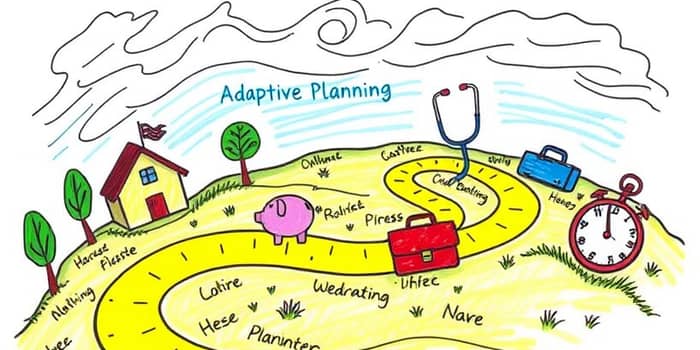
Life rarely follows a straight line. From career shifts and market swings to health concerns and evolving family needs, the only constant is change. By building adaptability into every decision, you secure greater confidence and control over your future. This article explores strategies to ensure your personal, career, and financial plans can bend without breaking.
No matter how meticulously we plan, unexpected twists await. The average person will change careers 10–15 times, and market volatility can erode even the most carefully constructed retirement nest egg. Conventional wisdom—like assuming a fixed retirement age or steady income growth—often falls short.
Consider a 30-year-old designing a 50-year financial roadmap. In that half-century, economic crises, health emergencies, and personal breakthroughs all demand recalibration. Embracing rolling five-year horizons lets you adjust as needed, recognizing that today’s assumptions may be obsolete tomorrow.
Traditional strategies often rely on rigid rules: spend down at 4% per year, retire at 65, rely on a single employer’s pension. These models ignore the reality of modern life and rising longevity.
When the unexpected strikes—job loss, a medical emergency, or a family obligation—you need room to pivot without derailing your entire plan.
Flexibility begins with how and where you save. Rather than committing to an inflexible vehicle, explore options that let you scale contributions up or down.
Living below your means and prioritizing consistent savings creates a financial cushion. Automate transfers to high-yield savings accounts or brokerage accounts, adjusting amounts as income shifts.
Review your savings mix annually. If you receive a bonus, consider redirecting a portion to discretionary funds or an emergency reserve instead of locking it away in illiquid assets.
Advances in artificial intelligence have unleashed powerful, dynamic, personalized strategies. AI-driven platforms analyze your income, expenses, risk tolerance, and goals in real time, alerting you to potential shortfalls and suggesting course corrections.
These tools can:
It’s not enough to set and forget. Regular review and adjustment are critical to staying on track.
By embedding these steps into your routine, flexibility becomes a habit rather than an afterthought.
At its core, flexible planning is a mindset shift. It means acknowledging that planning is a journey, not a destination. Cultivate resilience by viewing setbacks as opportunities to pivot rather than failures to avoid.
Remember: no plan survives unchanged indefinitely. Life’s twists and turns—job relocations, health events, market corrections—are inevitable. The goal is not perfection but preparedness. As one expert advises, “Don’t be disappointed if your plan doesn’t play out exactly as you initially thought—go with it.”
In a world defined by uncertainty, flexibility isn’t optional—it’s essential. By saving consistently but remaining agile, leveraging technology, and committing to regular plan reviews, you can navigate life’s curveballs with confidence.
Adopt these strategies today to build a truly adaptable plan. When the unexpected arises, you’ll have the freedom and peace of mind to respond effectively, ensuring your long-term goals remain secure.
References













